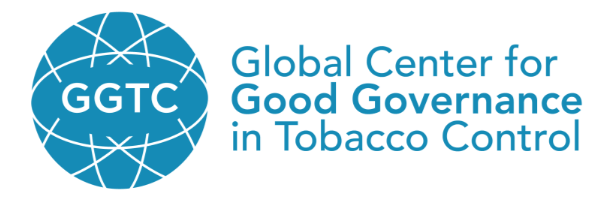Save the Ocean from Tobacco’s Toxic Plastics
The report entitled “Tobacco’s Toxic Plastics: A Global Outlook” explains how uniquely toxic cigarette butts are due to their chemical and heavy metal content. The report also mentions that the tobacco industry knew that the plastic fibers of cigarette filters are causing a more aggressive form of cancer.
Tobacco control community advocates seek to save the ocean from “tobacco’s toxic plastics” in line with a report published by the Global Center for Good Governance in Tobacco Control (GGTC) on World Oceans Day highlighting the theme “Revitalization: Collective Action for the Ocean”.
The report estimated that the world has suffered roughly USD 186 billion* in ecosystem losses in the past 10 years due to disposed cigarette butts and tobacco plastic packaging that are estimated to enter the oceans. Meanwhile, the estimated annual cost of managing tobacco product plastic waste is USD 548 million
The report entitled “Tobacco’s Toxic Plastics: A Global Outlook” explains how uniquely toxic cigarette butts are due to their chemical and heavy metal content. The report also mentions that the tobacco industry knew that the plastic fibers of cigarette filters are causing a more aggressive form of cancer.
Notably, cigarette butts are comprised primarily of cellulose acetate – a form of non–biodegradable single–use plastic. According to the report, the tobacco industry’s tactics obscure the environmental and health harms it causes. Tobacco companies and tobacco–funded entities support anti–litter and related campaigns as means of self–promotion, marketing and sponsorship, which are prohibited in many
countries.
In honor of World Oceans Day, GGTC joined the collective action of tobacco control advocates from across the world who are disseminating a country–specific environment brief entitled “How Should Tobacco Companies Pay for Pollution?” prepared by GGTC in collaboration with STOP, a global tobacco industry watchdog.
According to GGTC’s Executive Director, Bungon Ritthiphakdee, “the report provides an initial conservative estimate of annual post–consumer waste management costs of tobacco products, and secondary costs of tobacco’s plastic waste pollution based on what is known about the level of plastic contamination of oceans and other water bodies. The estimates and extent of the plastic pollution caused
by cigarette filters come at a time when the UN declared war on ‘single–use plastics’ and while the international community prepares for a global plastics treaty.”
The report calls upon the governments to make the tobacco industry pay for environmental harms and invest in independent research into the valuation of tobacco’s environmental harms to make informed policy–decisions, including making the tobacco industry pay for these through taxes or levies, or litigation, among others. It also calls on the environmental sector to ensure that tobacco’s toxic plastics are properly dealt within the global plastics treaty that is being negotiated; particularly, that the tobacco industry is not allowed to partner with governments, to have a seat at the table, or to undermine sponsorship bans in the name of “Extended Producer Responsibility” schemes commonly adopted to deal with single–use plastics.
This is because tobacco products provide no benefit to humanity or economy, and that the tobacco industry should not be treated like any other industry, in accordance with Article 5.3 of the global tobacco control treaty, WHO Framework Convention on Tobacco Control.
*The study utilizes estimates on “ecosystem services loss for the lifetime of plastics” derived from WWF’s Hidden Cost of Plastics, 2021. For tobacco’s plastics (cigarette butts and plastic packaging), it is estimated that USD 20 billion is lost every year in terms of loss of ecosystem services over the duration of the lifetime of tobacco’s plastics. The cost for the past 10 years is USD 186 billion accounting for inflation. “Ecosystem services” is defined in the WWF’s report as “provisioning, regulating, habitat and cultural services,” where “provisioning services include the various goods people can obtain from marine habitats, including aquatic food in the form of farmed or wild capture fish, invertebrates, and seaweeds. Regulating services include carbon sequestration, flood control, and pest control. Finally, habitat and cultural services include novel chemicals, genetic diversity, spiritual sites, and recreation.”


